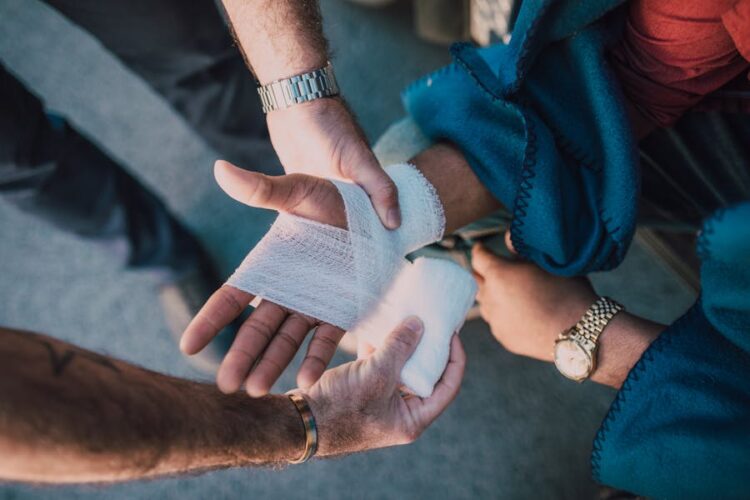Florida stands out in the United States for its notably high rate of personal injury cases. With 1,237% more filings per capita than the national average, the state reflects a significant demand for legal and medical responses to these incidents. This high frequency highlights the pervasive nature of personal injuries and the extensive need for professional legal and healthcare services to address the aftermath.
Settling a personal injury case can be a complex process that varies widely in duration, depending largely on the case specifics, the parties involved, and the legal representation. Factors such as the severity of the injury, the clarity of liability, the amount of compensation being negotiated, and the efficiency of the judicial system all play significant roles. In Fort Myers, Florida, where personal injury cases are prevalent, having expert legal representation is crucial. The law offices of Anidjar & Levine specialize in navigating these intricate cases, leveraging their expertise to streamline the process. Their approach not only emphasizes comprehensive legal strategy but also prioritizes client communication to keep you informed every step of the way.
This article explores the details that impact the time required to settle cases. Let’s take a look.
Getting Assessment of the Situation
Embarking on the path to resolving an injury claim starts with an assessment. Lawyers typically request in-depth details about the accident, such as medical records and incident reports, to assess the case’s legitimacy and possible compensation options. They do this before diving deeper into legal proceedings that could stretch over weeks or even months, depending on the intricacies involved, allowing the injured individual to concentrate on recuperation while their legal counsel manages the necessary paperwork.
Talks About Reaching Agreements
After completing the assessment stage, the next step usually involves starting negotiations with insurance companies. Insurance adjusters carefully examine the claim and take into account aspects such as liability and damages. Both sides participate in talks that may include rounds of proposals and counteroffers. This stage could stretch over months, especially if there are disagreements over liability or the severity of injuries. Being patient is key as this negotiation process plays out.
Treatment for Injuries
Treatment for injuries plays a role in determining the timeline for settling injury cases. It is essential to achieve full recovery or reach maximum medical improvement (MMI) before reaching a settlement agreement to ensure that all medical costs and future requirements are taken care of adequately. The duration of treatment can vary significantly depending on the severity of the injury, which could potentially prolong the settlement process by months to longer periods of time. It is important for those who have been injured to prioritize their well-being and allow themselves time to recover fully.
When Negotiations Hit a Snag in Legal Matters
In some instances, not all situations are resolved through settlement talks alone. When discussions come to a legal action, it may be required to move forward with a lawsuit, which begins an official legal procedure consisting of different steps. These steps include discovery depositions and perhaps mediation. Litigation can prolong the process substantially, often lasting for a year to two years or even more. Nonetheless, numerous cases get resolved before reaching the trial phase, as the involved parties frequently reassess their stances throughout the litigation proceedings.
Influences on the Duration
Several elements impact the duration needed to conclude injury claims. The intricacy of cases is a factor; those that entail parties or substantial evidence tend to prolong the resolution process. The collaboration of parties such as witnesses and medical experts also plays a role in determining the timeline. Additionally, the scheduling and availability of courts can affect the speed at which legal proceedings unfold. Grasping these factors aids in establishing expectations for individuals anticipating case resolutions.
The Significance of Being Patient and Persevering
Reaching a settlement for injury cases requires a great deal of patience, as the process is complex and unpredictable when it comes to timing estimates. Keeping in touch with your legal team is key to staying updated about how things are moving along and any unexpected holdups that may arise. By staying determined in seeking compensation, you guarantee that the necessary support for the individual will be provided, no matter how long it may take.
Considering Different Settlement Choices
Variations in settlement choices may impact how long personal injury cases last. Certain situations offer the possibility of settlements that extend compensation over time of a one-time payout. This method can offer extended stability, which is beneficial for those with ongoing medical requirements. Consulting legal advisors about these choices guarantees a strategy that suits the individual circumstances of the injured party.
Conclusion
Resolving a personal injury lawsuit involves navigating a nuanced terrain shaped by many elements. The timeline differs for each case, and grasping the phases involved aids in setting expectations. From assessments to legal action, every stage is vital in achieving a solution. Seeking assistance and being patient while considering flexible settlement alternatives are key factors for a positive result. Above all else, focusing on recovery and securing compensation are priorities throughout this complex process.










